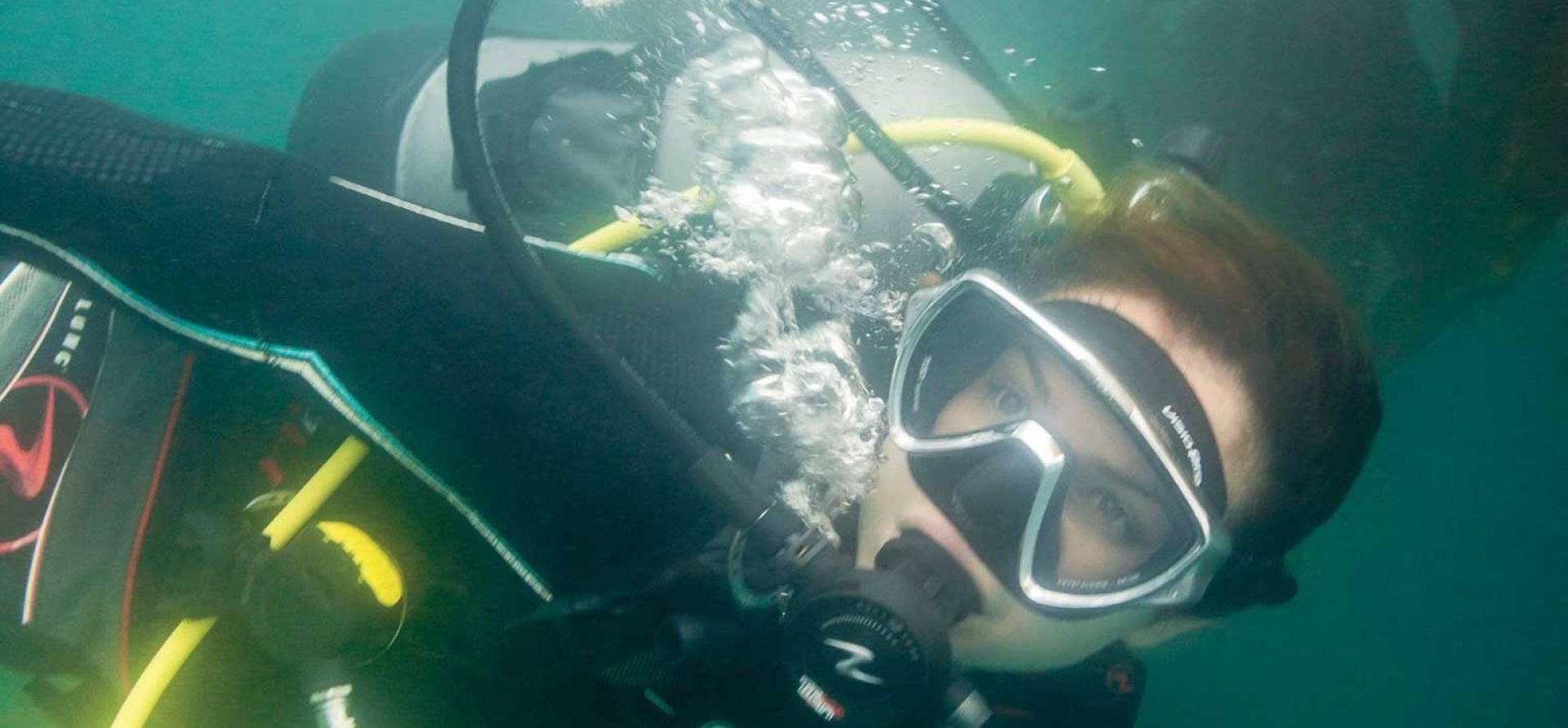The Meistrells know a thing or two about the waters off Palos Verdes. “We’re a family-owned business; there aren’t many companies like us that have the depth we do,” says Billy Meistrell, vice president of Body Glove International.
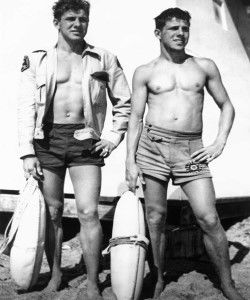
In 1953 Bill Meistrell (Billy’s father) and his twin brother, Bob, bought into Bev Morgan’s Dive N’ Surf shop in Redondo Beach. The Meistrell brothers were passionate about the water, and when they weren’t diving, fishing or hunting lobsters off Catalina Island or Palos Verdes, they were often experimenting with diving equipment.
Tinkering around with the rubberized material used to insulate refrigerators, they developed one of the first designs for a modern wetsuit—a prototype that allowed them to spend even more time cruising beneath the waves. In 1957 the twins acquired Dive N’ Surf, and the shop eventually became home to Body Glove—one of the largest action sports and water sports companies in the world.
Today Bill’s and Bob’s children continue the family’s business. Bill passed in 2006 at age 77, and Bob left us in 2013 at 84.
“This is a place with a lot of passion, history and family involvement,” says Billy of the legendary Dive N’ Surf. Palos Verdes is as much a part of Meistrell family lore as Redondo Beach, and comprehending the family’s connection to the rocky peninsula allows for a better understanding of the importance and richness of the South Bay’s dive and watersports culture.
Growing up in Missouri, Bill and Bob formed an immediate connection to the water. As children, they built their first dive helmet using a five-gallon vegetable oil can, tar, a garden hose and a bicycle pump. They tested it out in a local pond.
According to the Los Angeles Times, during the 1940s Bill and Bob’s mother relocated the entire family to Manhattan Beach following the passing of their father. Almost immediately the twins ditched their oil can helmet and purchased an actual diving helmet for $25, scoring a deal because its previous owner had drowned while wearing it.
They attended El Segundo High and soon afterwards became lifeguards, spending countless hours at the beach or in the water. “Bill and Bob were at the beach from morning to dark,” says Billy. Both served military—Bill in Korea and Bob stationed in Monterey.
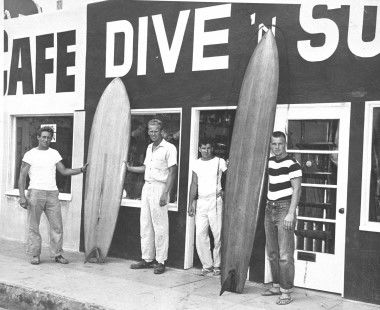
Buying into Dive N’ Surf in the ‘50s helped the brothers support their love of diving and spearfishing near Palos Verdes. “I’m proud of spearfishing and going out and catching what you want to eat,” says Billy, who first learned how to dive at age 11 off Catalina.
Spearfishing was and still is important to the Meistrell family. The sport encourages practitioners to be mindful of the ocean and its limited resources. “There’s no waste; there’s no purer way,” he says about the sport, which involves selectively harvesting certain game fish of a particular weight and size. He adds that those who “catch their own food are close with nature and can understand the balance.”
He also notes there’s never a surefire guarantee of catching something every time. It’s hard work. It’s a sport that requires a person to be mindful and respectful of nature and, above all, dedicated.
“There’s no truer waterman than Bill or Bob,” he says. “It wasn’t about money. It was furthering their passion and making new products to keep their passion going.”
Bill and Bob were always on the hunt for ways to make diving in the sometimes chilly South Bay more efficient and comfortable. In the early 1950s they developed one of the first commercially viable and effectively practical wetsuits. After buying Dive N’ Surf in ’57, the shop became the forefront of their wetsuit line, Body Glove.
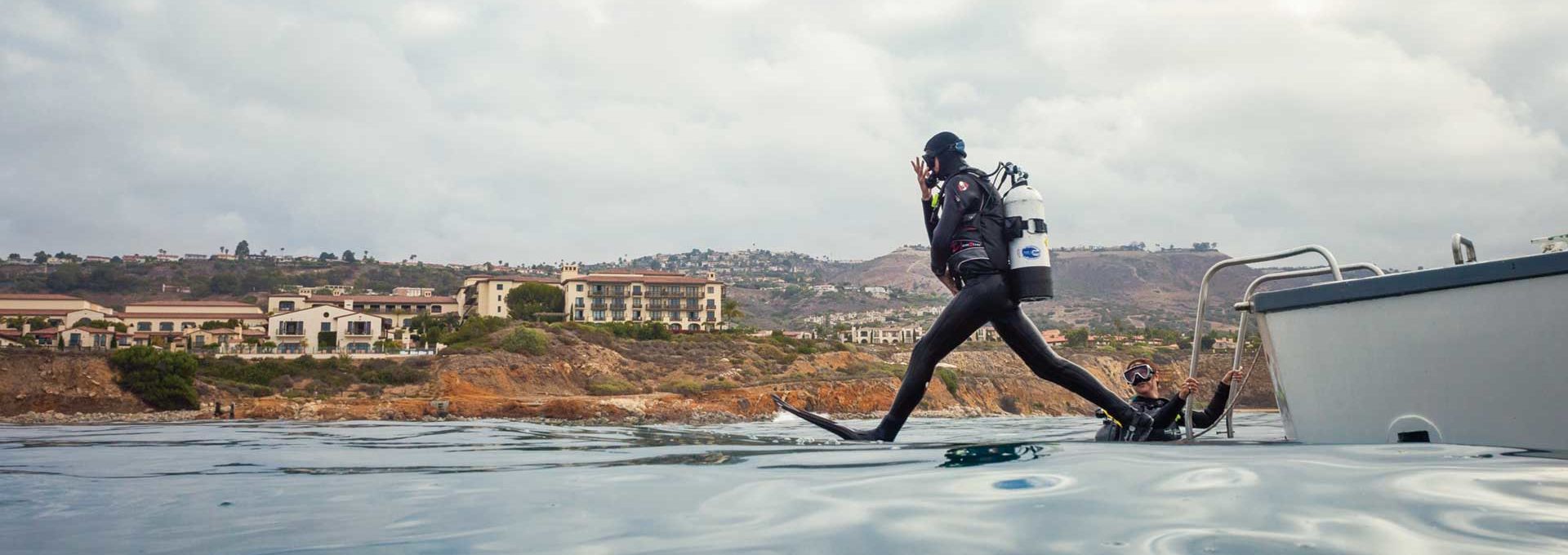
Aside from spearfishing and hunting lobster amongst Palos Verdes kelp beds, the Meistrell twins also taught others—including a number of Hollywood stars—how to dive those waters. Hollywood approached the Mesitrells on a number of occasions to build wetsuits for television shows such as Sea Hunt, and the brothers were often hired to act as diving consultants. They taught stars such as Lloyd Bridges, Charlton Heston and Gary Cooper how to walk, talk and dive like true divers.
Sometimes the twins would customize the suits specifically for the stars. “Lloyd wanted the suits to look sexy,” says Billy, laughing. “‘Get those hips cut up high,’ he’d say.”
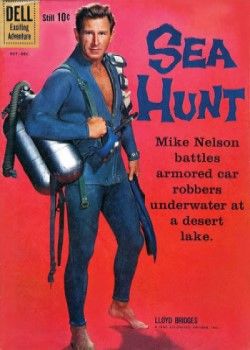
Sea Hunt was especially popular amongst the Meistrell family. Since it was one of the first dive-themed TV shows, it helped introduce the entire nation to the sport. “[My dad and uncle] thought it was great for the industry,” Billy says.
In addition to teaching Hollywood actors how to dive, the Meistrells were also deeply involved with Marineland of the Pacific, a former sea park that was located where Terranea Resort currently resides. “During the 1970s, they had ‘Baja Reef,’” says Billy, which was labeled, according to the Los Angeles Times, as “the world’s only swim-through aquarium.”
“You could swim, and we supplied the [wet]suits,” says Billy. “They had live fish in there: calico bass, garibaldis and starfish.” He adds that his father and mother honeymooned at Marineland.
Even after the park closed down, the twins still spent plenty of time in and around Palos Verdes. They especially loved diving off Point Vicente, Haggerty’s and even down among the wreckage of the World War II-era Dominator (which, Billy points out, is a fairly difficult dive).
You could swim, and we supplied the wet suits.
“The coast there is as pretty as you get in Northern California,” says Billy. The Meistrell family still dives off Palos Verdes regularly. “We have some clear water, and the kelp forest has come back as strong as ever,” he says.
And while the Meistrells will forever be connected to the South Bay, Billy notes that Palos Verdes is especially important to the family. His father and uncle made diving history years ago as they tested their wetsuits amongst Palos Verdes kelp forests. He notes that as long as he’s able to, he’ll continue to trek out to Palos Verdes, seeking its hidden treasures and enjoying the family’s favorite spearfishing spots.
To view more of Sea Hunt’s legacy, visit Nelson’s for behind-the-scenes images and memorabilia from the popular television program.
For more on Dive N’ Surf, visit them at divensurf.com.
Written by Stefan Slater | Photographed by Jeff Berting

